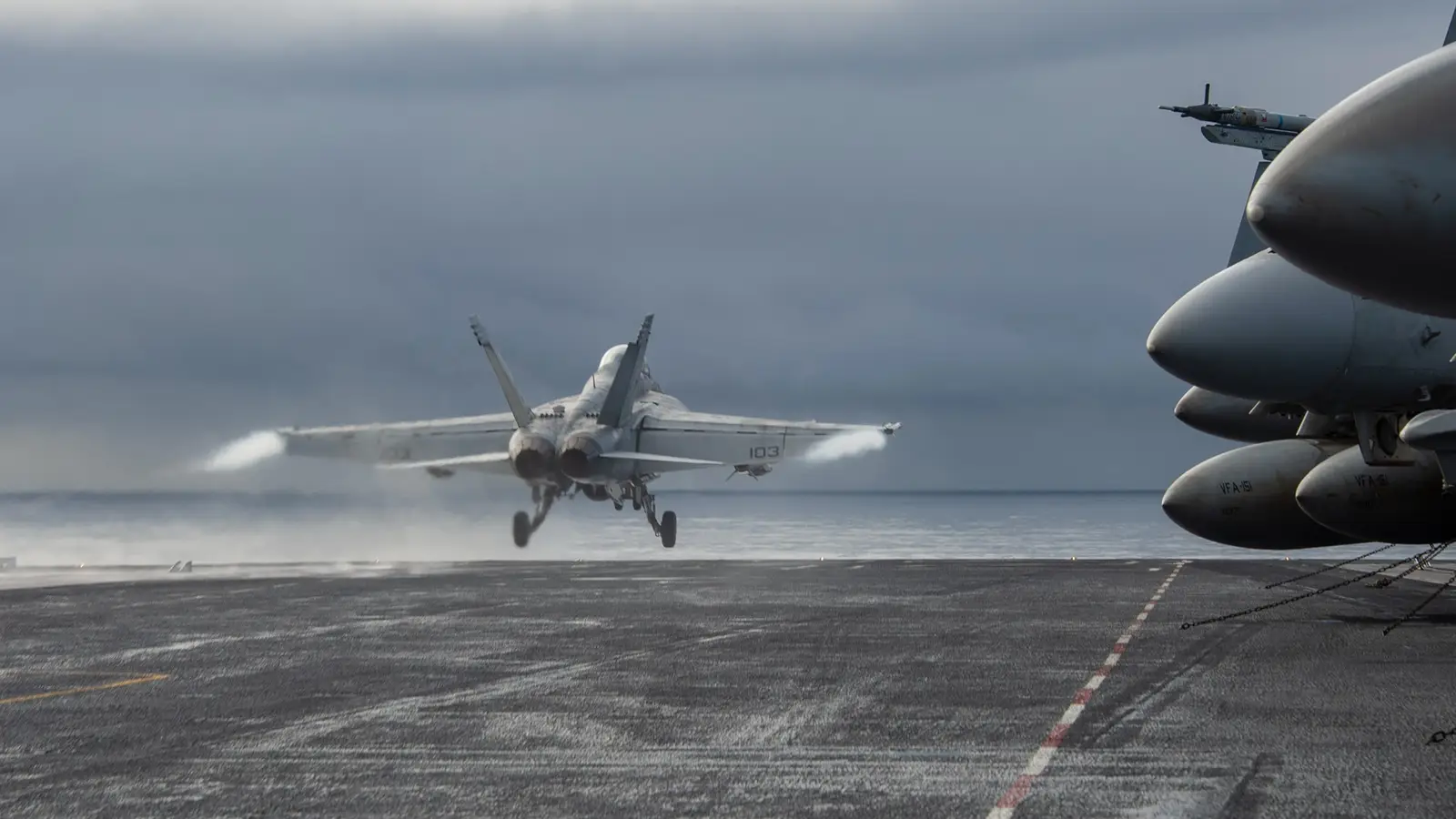
From the flight decks of American super-carriers to the icy runways of the Canadian Arctic, Boeing aircraft are the foundation of many of the most active air forces in the world. More than 3,000 fighters, transports, and helicopters built by Boeing are used by the ten forces in this review. The top ten tactical Boeing fleets are spread across five continents around the world.
Common themes and unique national priorities are revealed by following the fleets of Saudi Arabia’s Chinooks, Israel’s F-15s, Australia’s Super Hornets, and America’s massive air branches. All the numbers below are estimates, as the totals are ever-changing and most are not published in readily available public databases.
Royal Australian Air Force (RAAF)
Australia’s commitment to Boeing is a reflection of its alliance with the United States and a history of demanding uncompromising performance from its aircraft. Australia needs equipment that can work with US forces and is tough enough to fly from outback bases. The RAAF flies heavyweight strategic jets like 12 P-8A Poseidon, eight C-17 Globemaster, and two 737 Boeing Business Jet (BBJ.
Aussie force-structure decisions are dictated by its need for mobility across the Australian continent and ongoing maritime surveillance of the nearby oceans. On the TACAIR (tactical air) side, a modest front-line fighter fleet of 24 F/A-18E/F Super Hornets and 12 EA-18G Growlers is being drawn down as new Lockheed Martin F-35 stealth jets come in.
A moderately sized defense budget can cover a strategic area the size of a continent thanks to a common maker family. That lowers training and maintenance costs for the Air Force, Army, and Navy. The Army also has 29 AH-64E Apaches and 14 CH-47F Chinooks to provide close air support (CAS) and airlift to joint forces.
Spanish Air & Space Force
Spain still prefers a number of Boeing tactical models even though it assembles Airbus airliners and defense platforms domestically. When Madrid purchased the first CH-47 in 1973, its twin-rotor design provided lift that was unrivaled for alpine and island operations, surpassing European alternatives.
In addition to expeditionary commitments to NATO air-policing missions from the Baltics to the Sahel, the Air & Space Force concentrates on quick-reaction alerts over the Iberian Peninsula. Spain maintains 81 EF-18A/B fighters (known locally as C.15), and 13 Navy AV-8B Harriers for its carrier Juan Carlos.
On the helo side, it has 17 CH-47Ds that are under the Army’s airmobile brigade. Chinooks move troops through mountainous terrain as Hornets provide air cover and Harriers project power at sea. This selective Boeing preference in an otherwise Eurocentric inventory is supported by political goodwill with Washington and demonstrated combat capabilities.
Royal Canadian Air Force (RCAF)
Canada’s CF-18 fleet is composed of a combination of CF-188s and F/A-18A/Bs. Both serve to protect the second-largest national airspace in the world, by area. The Army operates 14 CH-47F Chinooks while the RCAF flies five C-17 Globemasters in the Air Mobility fleet. The heavy lifters are dedicated to long-distance transport in the Arctic, across Canada, and international efforts.
Ottawa favors Boeing equally for geopolitical and strategic reasons. Interoperability with its neighbor and closest ally, the USA, streamlines logistics and command under the NORAD alliance. CF-18 pilots are trained alongside US Navy and Marine units. C-17s are directly supported by the USAF’s worldwide supply and support network.
The CH-47’s heavy-lift power is crucial for the Army, especially as single-rotor helicopters are less reliable in the cold, vast wilderness of the Great North. The deal is strengthened by domestic jobs created by Boeing support programs, which also benefit Canadian industry.
Republic of Korea Air Force (ROKAF)
The ROKAF operates four advanced E-7 Wedgetail airborne early-warning (AEW) jets and 59 F-15K “Slam Eagles.” The airlift fleet has 737 and 747 transports for special missions in addition to a handful of Chinooks. The service’s focus is on the tense demilitarized zone (DMZ) that requires high readiness, reliable performance, and all-weather precision capabilities. The Army also has about two dozen CH-47s and three dozen AH-64 Apaches.
The F-15K allowed Korean Aerospace Industries to construct a sizable portion of it domestically under an agreement with Boeing. Commercial Boeing jet infrastructure provided a foundation to launch domestic aerospace into a defense partnership on a large scale. Korea is developing domestic stealth fighters and procuring F-35s as well to complement the fast, heavily-armed Slame Eagles.
Israeli Air Force (IAF)
Israel has the most eclectic F-15 fleet in the world outside of America. It includes over two dozen F-15I models, according to the World Directory of Modern Military Aircraft (WDMMA), plus two dozen F-15EX’s on order. There is also a slowly shrinking fleet of legacy Eagles with around 36 As, as well as a handful of B, C, and D variants.
The IAF has several KC-707 tankers, and a pair of E-707 AEWs increase reach, and eight upcoming KC-46As will revitalize aerial refueling. Within Gaza and along the northern borders, the Army’s 48 AH-64D/E Apaches offer close support. The KC-46 will slot into domestic maintenance since it shares the 767 airframe that was previously flown by El Al Airlines.
Continuous production ensures that spare parts are available even in times of emergency, which is crucial for a nation that has fought four wars in as many decades. Thanks to Boeing’s supreme fighter, the IAF stays one generation ahead of its regional competitors through strong strategic ties with Washington that facilitate accelerated Foreign Military Sales.
Japan Air Self-Defense Force (JASDF)
The foundation of Tokyo’s Boeing partnership is its strong US alliance logistics and licensed production. Mitsubishi Heavy Industries assembles F-15Js domestically, expanding advanced aerospace skills in the domestic workforce. Tankers and AWACS are supported by the 767 supply chain, which makes obtaining parts and training easier.
Japan has 199 Mitsubishi-built F-15Js to counter near-daily Chinese and Russian incursions along its territorial borders, according to WDMMA. Four E-767 airborne-warning aircraft and a mixed tanker fleet of KC-767s and KC-46s support long sorties over the East China Sea. Two 777-300ERs serve the government’s VIP transport needs.
In the rotary-wing department, there are 17 CH-47s in JASDF squadrons that complement a larger JGSDF inventory that includes 12 AH-64Ds and 17 MV-22B Ospreys. The large number of Boeing platforms helps with interoperability between US forces, which guarantees mutual support and cooperative operational planning in the face of continually increasing regional tensions.
Royal Saudi Air Force (RSAF)
The RSAF’s striking arm is supported by 210 F-15 models, including models equipped with AESA radar and conformal fuel tanks for deep attack and C/D models for air defense. The battlespace is coordinated by six E-3 Sentry AWACS, and seven KC-707 tankers. The Army provides ground commanders with heavy-lift and precise strike capabilities in the harsh desert terrain by deploying four dozen AH-64E Apaches and an equal number of CH-47F Chinooks.
Boeing is preferred by Saudi Arabia, combining alliance with technical capability. Oil profits and a close relationship with Washington enable Riyadh to acquire advanced American technology. The Kingdom appreciates the F-15’s payload and speed for lengthy over-water flights into the Arabian Gulf and Red Sea.
AWACS and tankers have the same 707 lineage, and Riyadh Air Base has centralized maintenance. Boeing’s training support assists in developing local technicians in accordance with economic-diversification programs, while boosting the supply chain of aerospace components.
United States Navy
Naval Aviation provides fleet air defense and precision strike with 548 F/A-18E/F Super Hornets spread across nine air wings. While 118 P-8A Poseidon squadrons hunt submarines from Okinawa to Sicily, 152 EA-18G Growlers cope with electronic attacks. The nuclear command network of TACAMO consists of 16 E-6B Mercurys and 17 C-40A Clippers shuttle personnel.
Boeing’s relationship with the previously Grumman-loyal Navy took off with the Hornet series. The Super Hornet shares logistics with Marine Corps F/A-18s, and its sturdy landing gear and folding wings fit Nimitz-class elevators. Boeing previously sustained the AV-8B Harrier IIs that the Marines recently replaced with F-35Bs.
Readiness is up and cost is down since switching P-3 squadrons to 737-based P-8s for maritime patrol. The jets can now make use of the greatest commercial aircraft supply network in the world. The new F-35C is replacing a portion of the Super Hornet fleet, but the two will complement each other for decades to come, and the Poseidon is slated to serve even beyond then.
United States Air Force (USAF)
Boeing’s size, political backing, and legacy keep it at the forefront of American air power. Because of the decades-old depot infrastructure surrounding the F-15, KC-135, and B-52, replacing them with non-Boeing models is costly. The company’s capacity to modernize Cold War platforms, like digitizing F-15s or re-engining B-52s, allows the USAF to fill capability gaps as newer platforms slowly come online. Despite recent setbacks, Boeing’s importance to defense and the US workforce is vital to the stability of the US Armed Forces and economy alike.
The US Air Force possesses the most diverse fleet of Boeing aircraft, including 149 F-15C/Ds, 218 multirole F-15E Strike Eagles, and eight next-generation F-15EXs with more on the way. The strike fleet has 58 B-52H bombers for conventional and nuclear deterrence, which are nearing a century of continued service. Meanwhile, 196 C-17s are used for heavy airlift, and CV-22 Ospreys support Special Operations Command with over 50 examples made in conjunction with Bell Helicopter.
There are 77 KC-46A Pegasus tankers that are recapitalizing the aerial refueling fleet. Over a dozen E-3 AWACS, four E-4B National Airborne Operations Centers, and 22 RC-135 Rivet Joints provide intelligence and command. Twelve C-40 VIP transports serve alongside the two VC-25A “Air Force One” 747s transports for the President.
United States Army Aviation
The largest rotary-wing fleet in the world is operated by US Army Aviation. That includes 449 CH-47F Chinooks for airlift and 824 AH-64E/D Apaches for ground attack. From Europe to the Indo-Pacific, ground commanders can rely on these helos for air assault, anti-armor support, and battlefield mobility.
The Army’s preference for Boeing is based on evolutionary design and mission fit. Vertical mobility is crucial for intra-island operations in the Indo-Pacific. The tandem-rotor CH-47 has Vietnam roots but is still unmatched in hot-and-high ops. Decades of investment have matured into the current iteration of the AH-64, which is the reigning champion of attack helicopters.
The supply chain and pilot training pipeline is made simpler by a shared original equipment manufacturer (OEM). Boeing’s Arizona and Pennsylvania plants also support tens of thousands of jobs, which promotes steady funding for ongoing airframe improvements.



